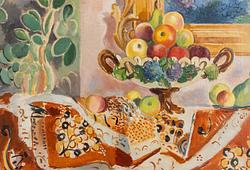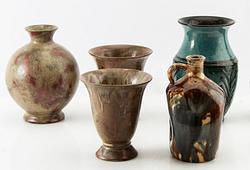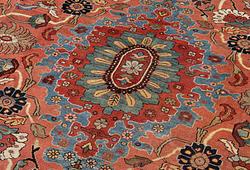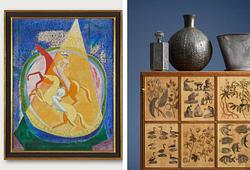Anders Zorn
Anders Zorn, "Hugo Tigerschiöld"
Etching, 1909, signed in pencil. P. 16.4 x 12.4 cm.
Not examined out of the frame.
Literature
Asplund 229, Hjert & Hjert 148.
More information
Hugo Edvard Tigerschiöld, born on 25 February 1860 at Fassmyra manor in Gryt parish, Södermanland County, died in Stockholm on 11 September 1938, was a Swedish civil servant and poet.
He was the father-in-law of Sven Afzelius. The noble family Tigerschiöld is originally a German family, Hornbeen, which immigrated around 1617 and engaged in bookbinding. The district judge Wickman Hornbeen (1654–1722) was ennobled with the name Tigerschiöld in 1686. Tigerschiöld passed his student examination in Uppsala in 1878 and became a candidate of philosophy in 1881. In 1883, he graduated in judicial practice and took the civil service examination in 1884. In 1886, he became an assistant district judge and simultaneously received the Swedish Academy's large prize for seven minor Poems from forest and lake. In 1887, he entered the Ministry of Ecclesiastical Affairs, where he became secretary of the chancellery in 1897 and chancellor and head of department in 1907. He served as secretary in the committees regarding the Civil Service pension institution and the organisation of the pension system for the state's civil servants, among other matters.
He initiated the Nyköping Canal and was active in modern rural household management as the owner of Öster-Malma farm, which is why he was called to be a member of the Royal Swedish Academy of Agriculture in 1911. As a young man, Tigerschiöld published three collections of poetry, which contain reflective mood and situational images, closely aligning with Carl Snoilsky. His poems have been set to music by, among others, Hugo Alfvén, Andreas Hallén, and Ture Rangström. In 1911, Tigerschiöld became a member of the Royal Swedish Academy of Agriculture. He was the brother of Ernst Tigerschiöld, father of Magnus Tigerschiöld, and grandfather of Dag Tigerschiöld.
Artist
Anders Zorn, born in Mora in 1860, showed artistic talent from a young age. In 1875, he traveled to Stockholm and became a student at the then Slöjdskolan (now Tekniska högskolan) in Stockholm, and shortly after, he joined the Royal Academy of Fine Arts. Initially, Zorn had aspirations of becoming a sculptor, but soon watercolor painting took over, becoming his primary medium until 1887. At the student exhibition in 1880, Zorn had his breakthrough with the watercolor painting "I sorg." The following year, he gained international acclaim as a portrait painter. His watercolor painting reached its pinnacle during this period, and his most famous work from this time is "Vårt dagliga bröd” from 1886. Shortly thereafter, Zorn transitioned to oil painting, which was met with immediate success. Zorn's reputation mainly rested on his portrait art, and he portrayed many notable figures, including presidents. For instance, he created an etching of Theodore Roosevelt. His etchings significantly contributed to his success. In the late 1880s, Zorn began working in the genre that would increasingly become his trademark: nude figures in outdoor settings. He had long been fascinated by the movement of water and the reflections of light on its surface. Now, he added the complexity of placing a model near or in the water, aiming to depict a synthesis between nature and humanity. In 1896, Zorn and his wife moved back to Sweden and settled in Zorngården in Mora. This move sparked a renewed interest in his homeland, which would be reflected in his future paintings. Among the artist's scenes from the Mora region, portraying its local customs and ancient traditions, "Midsommardansen" holds the highest value according to Zorn himself. Today, the painting can be found at the National Museum.
Read more






































